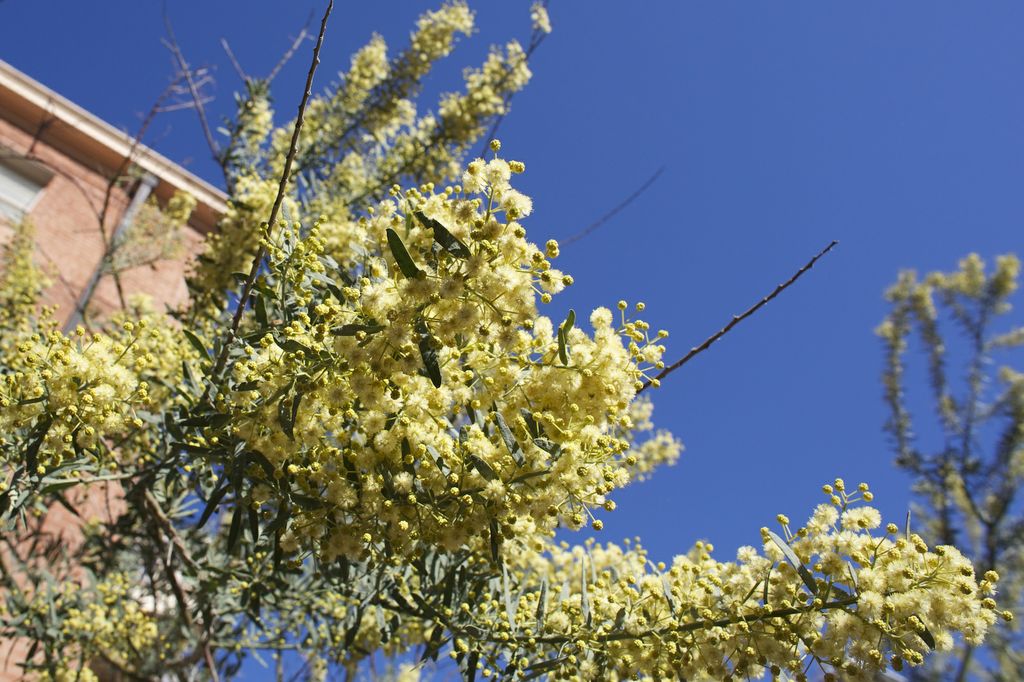 Botanical Characteristics:
Botanical Characteristics:
This small, short-lived tree originates from the dry inland areas of Australia. It has simple, dull blue-green, strap-shaped phyllodes subtended by straight, reddish-brown spines. Phyllodes are flattened and widened petioles (leaf stems) that serve as the leaves. Each of these is slightly curved to about 5 cm. long and has a prominent mid-vein and a waxy look. Branches are covered in 1 cm. stipular spines. Each phyllode has 2 slender spines at its base. Cream-colored puffball flowers occur in pairs in 10-12 cm. clusters. Flowering is heavy and the scent is strong. The pods can grow to 8 cm. long and 1/2 cm. across. They are papery and easily dehisce along the seams.
Medicinal Value:
Avicins produced in the aerial plant organs have been shown to inhibit inflammation and cancer in laboratory studies. The seed extract in particular has shown potent anti-tumor properties via regulating cell cycles. In experiments, triterpenoid saponins decreased tumor cell proliferation and induced apoptosis (cell death).

